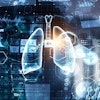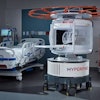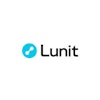Automation represents the current value of AI in the hospital emergency department (ED), a Yale University emergency radiologist shared last week at the 124th American Roentgen Ray Society (ARRS) meeting in Boston.
Yale New Haven Health System is often approached to try out new software, and Melissa Davis, MD, fields the inquiries. When they make it past Davis, the pitches are passed to a group of physicians in the Program for Imaging Innovation and Informatics. This group drives technology initiatives across the Yale University-Yale New Haven Health System continuum.
However, purchasing an algorithm for radiology occurs at the hospital level, Davis said, recalling when purchasing was easier pre-COVID.
"Now we have to look at the potential ROI, the turnaround time, length of stay; these are ways that we talk to the hospital to say, 'Can we think about this tool, and can we evaluate it so that we can show that it has some sort of efficiency ... once we have the pilot going and we're able to prove a business case, the budgeting committee decides if we have the budget for it in the next fiscal year," Davis said during her talk on hot topics in emergency radiology.
"This becomes very frustrating for physicians who want to buy [an algorithm] now; it just doesn't work that way," Davis continued. "It's usually a year-long process for budgeting."
As associate professor and vice chair of medical informatics in the department of radiology and biomedical imaging at Yale, Davis said her office frequently receives AI vendor requests. The ED has tried many algorithms and found where they work and don't work well.
For Davis, who also has an MBA in healthcare management, "the automation piece is where the value is at this moment. If I measure something, automatically putting it into a report so I don't have to dictate it; so I don't have translation errors between moving one thing to another space. Those are little things that are not getting the time on stage but are actually probably most impactful for the way that we operate today," Davis said, adding that hospitals are getting more critical in their budgeting conversations and decisions.
"It's a lot harder for us to onboard AI," Davis said. "We diagnose almost 180,000 pathologies as radiologists. If I'm going to implement 180,000 algorithms that's a billion dollars. We're not going to do it, so there's a lot of conversation around what's the utility, what's going to be useful, and what's not going forward, but it's a very healthy conversation to have."
Davis also said emergency radiology is constantly evolving. Emergency imaging is becoming more dominant; however, having multiple algorithms running can be problematic. The issue is prioritizing acute situations.
"We have strict turnaround time limits, for inpatient services, for outpatient services, and for the ER," she said. "So even though we have these algorithms running and flagging, we still have to read within our specified time period. There's a lot of conversation about how prioritization is done and when we actually need to deprioritize or turn off prioritization for certain algorithms, that we try to monitor carefully," but the team still must stick to established turnaround times, Davis explained.
"We know that there are certain algorithms, [such as] our aortic dissection algorithm flags chronic dissections," she said. "So I need to teach [residents] to be critical of that algorithm. Same thing with cervical spine. It flags degenerative change too much. So I need to be critical around that."
Trainees also need to be exposed to the radiology AI algorithms that are coming out and learn how to evaluate them, Davis continued.
"I think it's very important that we as attendings teach residents to be critical of AI and to disagree with it, essentially," she said.
Davis added that there's debate around whether first-year residents should be allowed to see AI outputs, or if fourth-year residents instead should have more exposure.
"We've taken the approach of talking about it, what we agree with and what we don't agree with, and being very flexible and turning it off [when] we know it doesn't work and being transparent about that," Davis said.
Like other areas of the radiologic workforce, hospital EDs need more residents to choose emergent and trauma imaging, Davis noted. Dedicated training offers a new path.




















